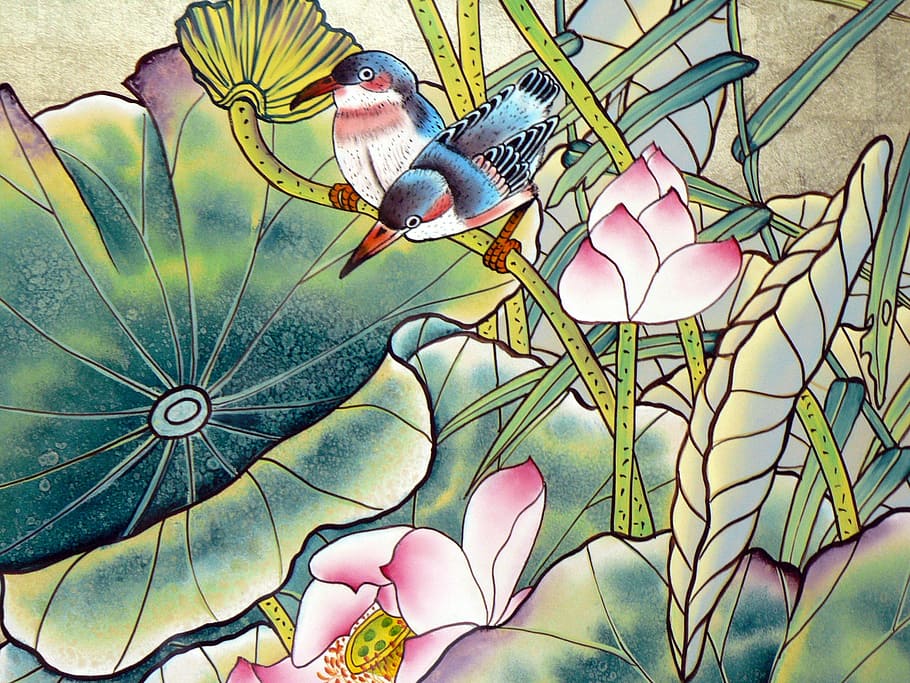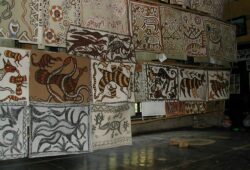The Artistry of Silk Painting: A Journey of Colour and Elegance
 Posted On
Posted On
Silk painting, an exquisite and ancient art form, combines the delicate beauty of silk fabric with the vibrant colours of paint to create stunning visual masterpieces. Originating in ancient China over a thousand years ago, silk painting has evolved into a timeless and captivating artistic expression that continues to mesmerize art enthusiasts worldwide. In this article, we will explore the enchanting world of silk painting, its history, techniques, and the enduring appeal it holds in the contemporary art scene.
A Glimpse into History
Silk, a luxurious and highly-prized fabric, served as the canvas for this exceptional art form. It all began during the Tang Dynasty in China when artisans started decorating silk fabrics with intricate designs using various techniques. However, it was during the Song Dynasty that silk painting truly flourished, with artists perfecting the craft and developing innovative methods to create vibrant and enduring artworks.
Materials and Techniques
Silk painting relies on a few fundamental materials: silk fabric, brushes, and dyes. The silk fabric used for painting is typically stretched on a frame to create a smooth and taut surface for the artist to work on. Brushes made from various materials, such as bamboo or animal hair, are used to apply the dyes with precision and finesse.
The dyes used in silk painting are often water-based or alcohol-based and come in a wide range of colours. Artists can manipulate these dyes to achieve different effects, from translucent washes to bold, vibrant hues. One of the most intriguing aspects of silk painting is the way the dyes interact with the silk fibers, creating a unique blending and diffusion of colours.
Artists employ various techniques in silk painting, including outlining, blending, and layering. Outlining is used to define the edges of the design, creating sharp and clear lines. Blending involves merging different colors seamlessly, creating smooth transitions and gradients. Layering allows artists to build depth and complexity in their compositions by adding multiple layers of colour.
The Creative Process
Silk painting is not just a craft; it’s a form of self-expression that requires skill, patience, and creativity. Artists often begin by sketching their design onto the stretched silk fabric using a pencil or water-soluble pen. This initial sketch serves as a roadmap for the painting.
The process of silk painting is a delicate dance between the artist and the fabric. Each brushstroke and application of dye demands precision and control. Artists must be mindful of the silk’s absorbent nature, as it can quickly soak up the dyes, making corrections difficult. This requires a high level of expertise and a deep understanding of the materials.
Contemporary Revival
While silk painting has deep historical roots, it has not remained stagnant. Contemporary artists have breathed new life into this ancient art form by experimenting with innovative techniques and incorporating modern themes. Silk paintings today can range from traditional landscapes and nature scenes to abstract and avant-garde works of art.
The allure of silk painting lies in its ability to capture the imagination, drawing viewers into a world of colour and elegance. It transcends cultural boundaries and speaks a universal language of beauty and creativity. As silk painting continues to evolve and adapt to the changing artistic landscape, it remains a testament to the enduring power of human creativity.
In conclusion, silk painting is a captivating art form that has stood the test of time. Its rich history, meticulous techniques, and enduring beauty make it a cherished medium for artists and art enthusiasts alike. Whether you are an artist seeking to explore new horizons or an admirer of fine art, silk painting invites you to embark on a journey of colour, elegance, and timeless creativity.



